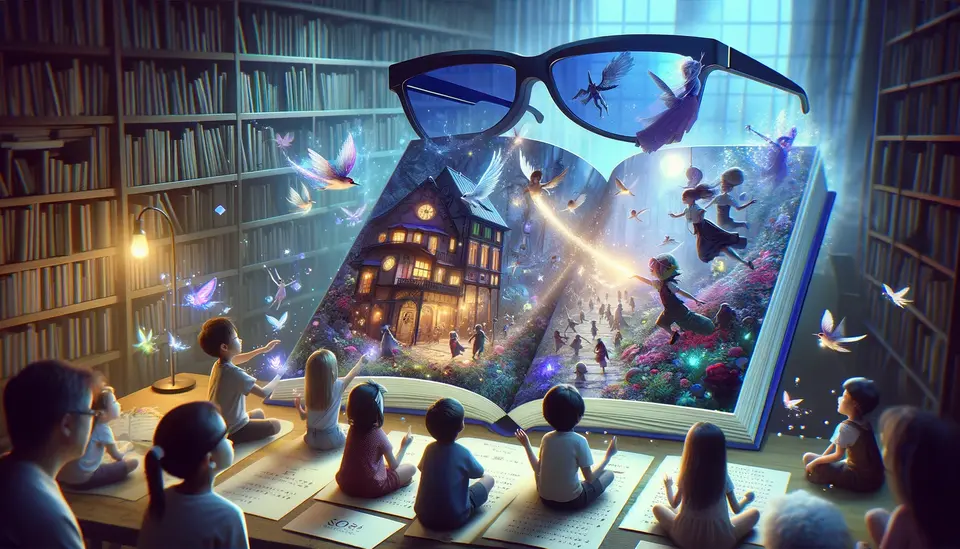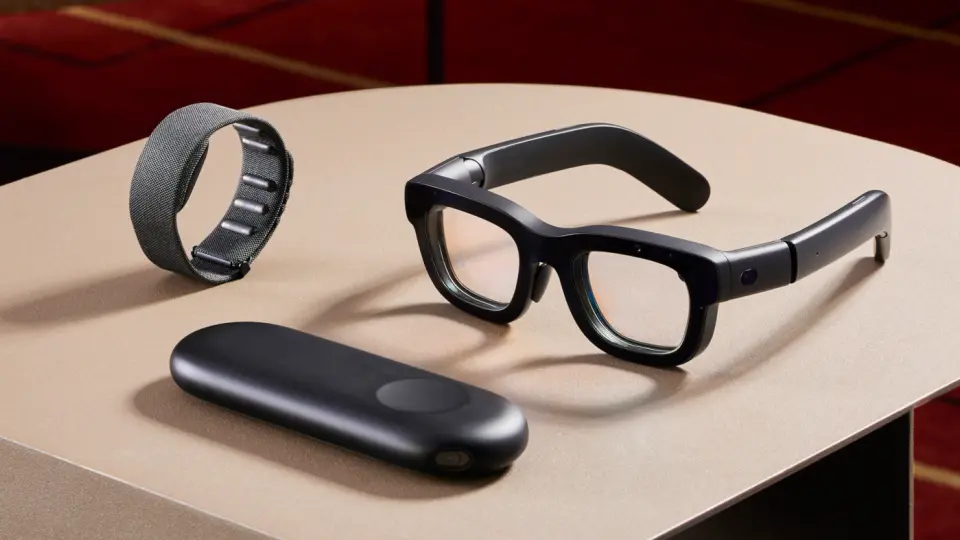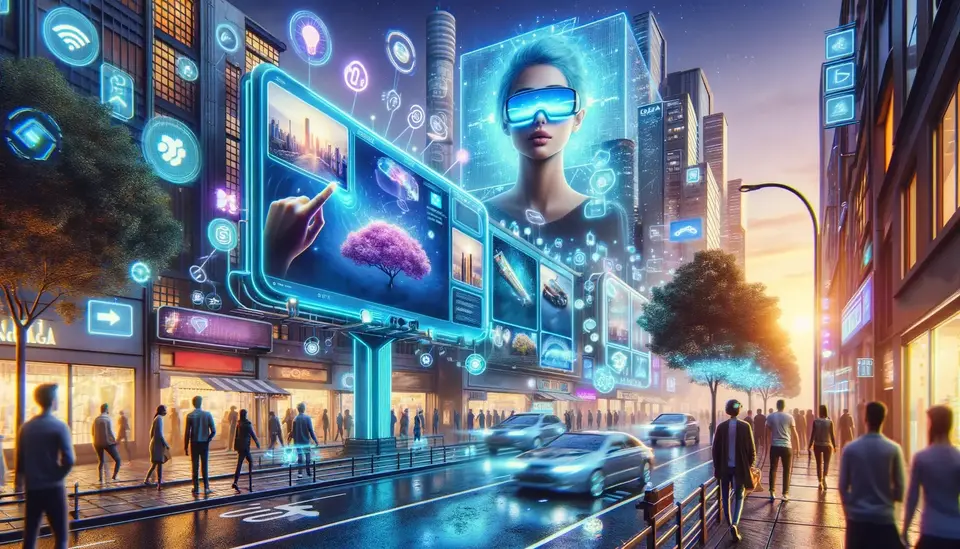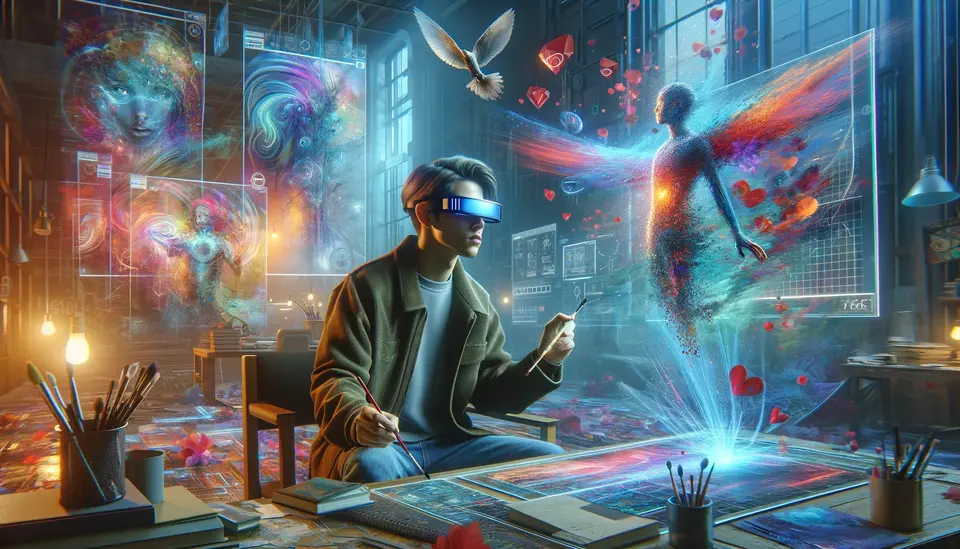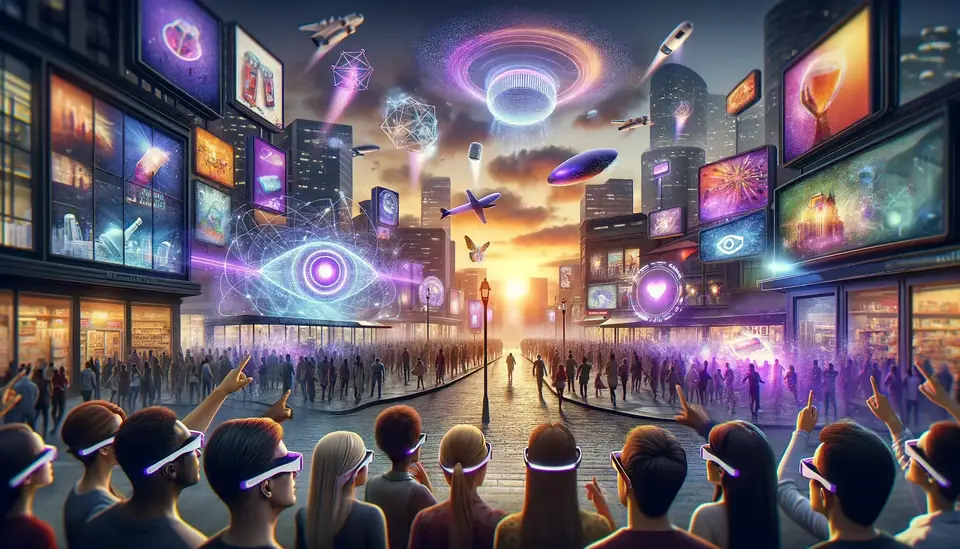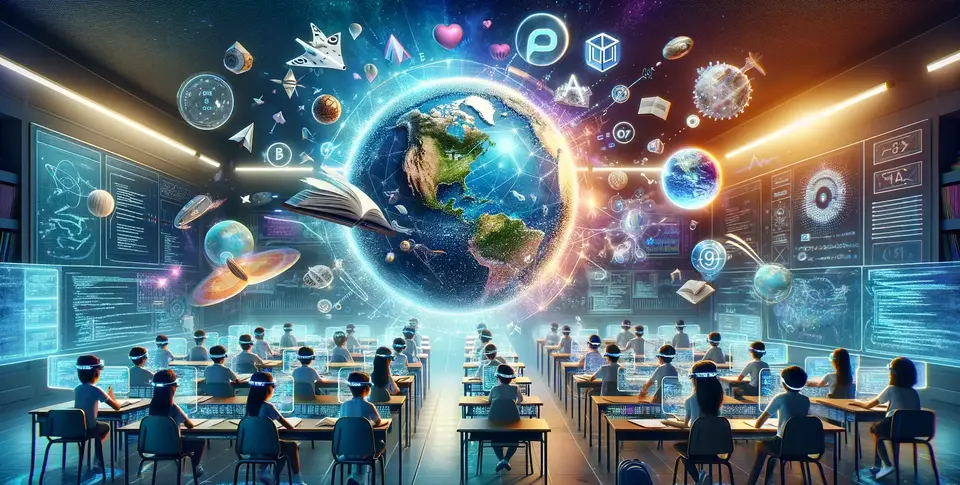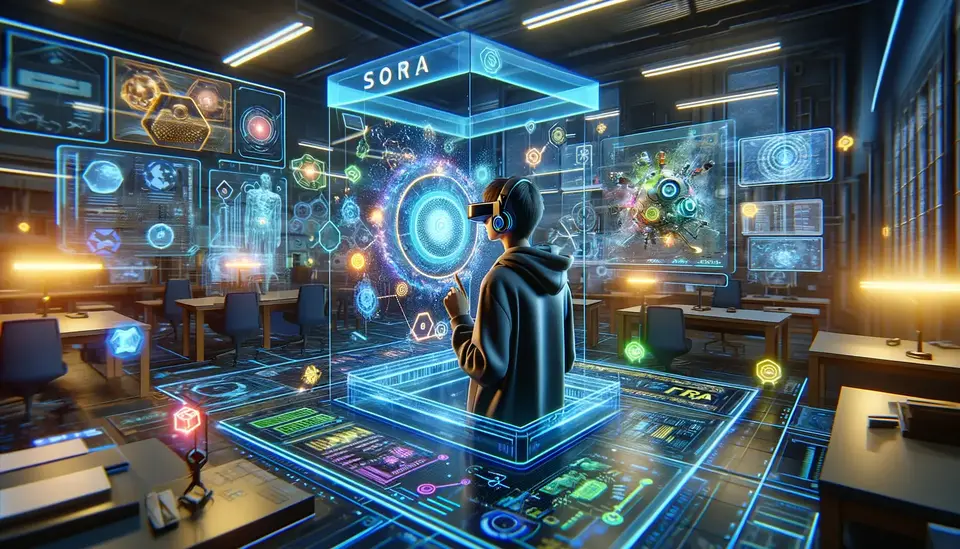Sora's Impact on Storytelling in Augmented Reality (AR)
Posted on March 5, 2024 9 minutes 1818 words
Table of contents
Introduction
The realm of Augmented Reality (AR) has transformed storytelling, offering immersive experiences that blend the digital and physical worlds in innovative ways. AR storytelling captivates audiences with interactive narratives, allowing them to become part of the story through the lens of AR technology. Into this evolving narrative landscape enters Sora, an AI model developed by OpenAI, poised to redefine storytelling within AR with its advanced video generation capabilities.
Sora represents a significant leap forward in AI-driven content creation, enabling the generation of realistic and imaginative scenes from textual instructions. This model can create videos up to a minute long, maintaining high fidelity and adherence to the user’s prompt, thus opening new possibilities for storytelling in AR. The impact of Sora on AR storytelling lies in its ability to generate dynamic, complex scenes and characters from simple text prompts, offering storytellers a powerful tool to bring their visions to life in the augmented reality space.
Understanding Sora and Its Capabilities
Overview of Sora
Sora is the culmination of OpenAI’s extensive research into generative models, built to understand and simulate both the physical and digital worlds through video. Unlike previous models, Sora can generate videos directly from text prompts, providing a minute of high-definition video that showcases an unprecedented level of detail and realism.
Technical Features
- Video Generation from Text Prompts: Sora takes textual descriptions and turns them into vivid videos, effectively translating the written word into visual narratives.
- High Fidelity and Resolution Video Outputs: The videos produced by Sora are not just detailed but also of high resolution, making them ideal for immersive storytelling within AR applications.
- Understanding and Simulating Physical and Digital Worlds: Sora’s training involves a vast dataset of videos and images, enabling it to understand and replicate complex physical interactions and digital environments.
Unique Attributes
- Ability to Generate Complex Scenes and Characters: Sora can create intricately detailed scenes and lifelike characters, providing a solid foundation for storytelling.
- Maintenance of Visual Quality Over Time: Even as the videos extend up to a minute, Sora ensures that the visual quality remains consistent, crucial for maintaining immersion in AR narratives.
- Application in Creating Realistic Animations and Environments: For AR, this means the ability to generate environments and animations that interact seamlessly with the real world, enhancing the user’s immersive experience.
The Evolution of Storytelling in AR
Historical Context
The inception of AR technology brought with it the promise of revolutionizing storytelling, offering a new medium through which narratives could be experienced. From simple text-based stories to interactive, location-based narratives, the evolution of storytelling in AR has been marked by a constant push towards more immersive experiences.
Limitations of Current AR Storytelling Techniques
- Limited Interactivity and Engagement: Despite advancements, many AR storytelling applications remain passive experiences, offering limited interaction to the audience.
- Challenges in Creating Realistic and Immersive Environments: Crafting believable AR environments that seamlessly integrate with the real world has been a persistent challenge, often limited by the technology’s ability to render complex scenes in real-time.
The Need for Innovation
The growing demand for more immersive and interactive storytelling methods in AR highlights the need for innovative solutions. This is where Sora steps in, offering the potential to overcome these limitations by leveraging AI-driven content creation to enrich AR storytelling with dynamic, realistic environments and characters.
These sections provide a foundation for understanding Sora’s revolutionary impact on AR storytelling, setting the stage for a deeper exploration of its potential applications, challenges, and future directions in the subsequent sections of the blog post.
Sora’s Role in Enhancing AR Storytelling
Realistic Environment Generation
Sora’s advanced video generation technology heralds a new era for AR storytelling, offering the ability to create highly detailed and immersive environments. By interpreting textual prompts, Sora can generate environments that are not only visually stunning but also contextually appropriate for the narrative. This capability allows storytellers to place their audience directly inside vividly realized worlds, significantly enhancing the immersion and believability of AR experiences.
Dynamic Character Creation
Beyond environments, Sora’s prowess extends to the generation of dynamic characters that can interact within AR narratives. These characters, brought to life with Sora’s AI, can exhibit a wide range of emotions, actions, and interactions, making each AR storytelling experience unique and engaging. The ability to generate characters that respond to the environment and the viewer in real-time adds depth to the narrative, offering personalized storytelling experiences.
Interactivity and Engagement
Sora elevates user engagement by introducing interactive elements to stories through dynamic video generation. Interactive stories can adapt to user choices or actions, leading to multiple narrative paths and endings. This level of interactivity, powered by Sora’s AI, transforms passive viewers into active participants, fostering a deeper connection with the narrative and characters.
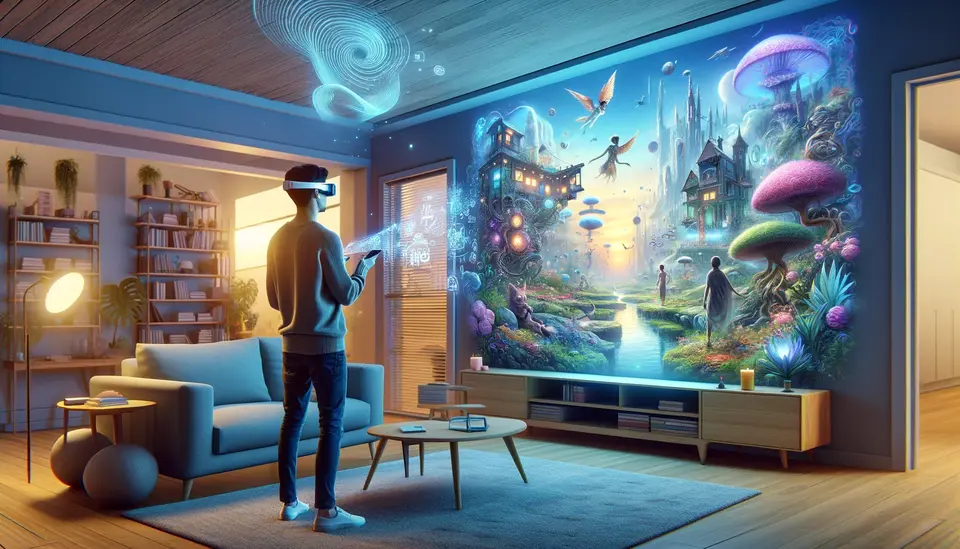
Possible Case Studies and Applications
Possible Real-world Applications
While Sora’s integration into public AR projects is still on the horizon, its potential applications are vast and varied. For instance, Sora could be used to create AR storybooks that bring characters and environments to life off the page, offering an interactive reading experience for children and adults alike. In museums, Sora could generate AR guides that tell the historical story of artifacts and exhibits, providing a dynamic educational experience.
Creative Possibilities
- Interactive Marketing and Advertising Campaigns: Brands could use Sora to create immersive AR campaigns that allow potential customers to interact with products in a narrative context, enhancing engagement and memorability.
- Educational and Training Modules: Sora could revolutionize education and training by creating realistic simulations and interactive scenarios for learners, from medical training simulations to historical reenactments.
- Gaming and Entertainment: In the gaming industry, Sora could be instrumental in developing AR games with rich, dynamic worlds and characters, pushing the boundaries of mobile and location-based gaming.
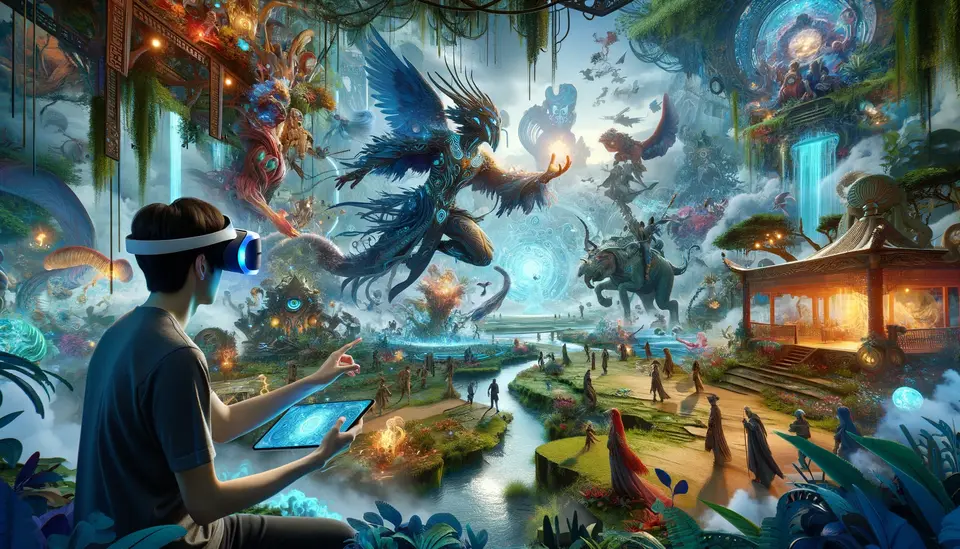
Challenges and Considerations
Technical Challenges
Integrating Sora with AR technologies presents several technical hurdles. These include ensuring real-time performance without sacrificing the quality of generated videos, optimizing AR hardware to handle Sora’s computational demands, and seamlessly blending generated content with real-world environments.
Creative Limitations
While Sora opens up new creative possibilities, it also presents challenges in ensuring that generated content aligns with the creator’s vision. Overcoming these limitations requires developing intuitive interfaces for specifying prompts and possibly integrating manual adjustments or corrections into the content generation process.
Ethical and Safety Concerns
- Addressing Potential Misuse: The ability of Sora to generate realistic content raises concerns about misuse, such as creating misleading or harmful content. Measures need to be in place to prevent such abuses.
- Ensuring Content is Appropriate and Respectful of Privacy: Ensuring that generated content adheres to ethical standards and respects privacy is paramount. This includes implementing content moderation tools and guidelines to prevent the creation of inappropriate or sensitive material.
Exploring Sora’s potential impact on AR storytelling reveals a landscape ripe with opportunity and challenges. As we move forward, the collaboration between technologists, creatives, and ethicists will be crucial in realizing Sora’s full potential while navigating the complexities of integrating AI with augmented reality.
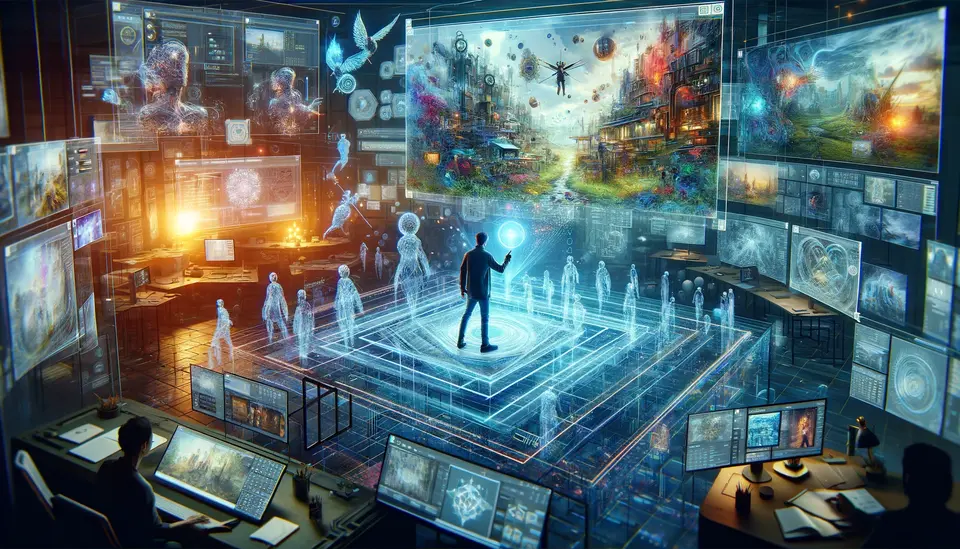
The Future of AR Storytelling with Sora
As we stand on the brink of a new era in augmented reality storytelling, the integration of Sora’s advanced video generation capabilities with AR technology heralds unprecedented possibilities for narrative experiences. The future of AR storytelling with Sora is not just a continuation of current trends but a leap into a realm of previously unimaginable interactive and immersive narratives.
Predictions
In the future, AR storytelling powered by Sora could evolve to include fully interactive, multi-sensory experiences that are indistinguishable from reality. As Sora’s technology becomes more refined, we can anticipate the emergence of AR narratives that adapt in real-time to the viewer’s reactions, creating a personalized story for each user. The blending of Sora’s AI with AR will likely lead to the development of new forms of entertainment, education, and social interaction, where stories are not just told but lived.
Potential Impacts
Sora’s ability to generate detailed environments and dynamic characters could revolutionize narrative techniques within AR, making stories more engaging and emotionally resonant. This technology could democratize content creation, allowing storytellers without extensive technical skills or resources to bring their visions to life in rich, immersive AR experiences. Moreover, Sora could enhance cultural and historical education by creating vivid, interactive reconstructions of historical events or distant cultures, making learning a more engaging and impactful experience.
Call to Action
To realize this future, developers, storytellers, and creatives are encouraged to explore the possibilities with Sora and AR. By experimenting with Sora’s capabilities, sharing insights, and collaborating across disciplines, the community can push the boundaries of what’s possible in AR storytelling. OpenAI’s continued development of Sora, in conjunction with feedback and creative input from a diverse range of users, will be crucial in shaping the future of this technology and its application in augmented reality narratives.
Conclusion
Sora represents a transformative leap in the capabilities of AR storytelling, offering unparalleled realism, interactivity, and emotional depth. Its potential to create detailed, dynamic environments and characters opens up new horizons for immersive narratives that engage and captivate audiences in ways never before possible. As we look forward to the evolution of storytelling in augmented reality, it’s clear that Sora stands at the forefront of this revolution, promising a future where stories are not merely observed but experienced, where every narrative is as unique as the individual experiencing it.
The journey into the future of AR storytelling with Sora is just beginning. As technology continues to evolve, so too will the ways we tell and experience stories. The convergence of Sora’s video generation capabilities with AR technology offers a glimpse into a future where storytelling transcends traditional mediums, offering immersive, interactive narratives that enrich our lives and expand our understanding of the world around us. The exciting future of AR storytelling with Sora awaits, full of potential and possibilities yet to be explored.

